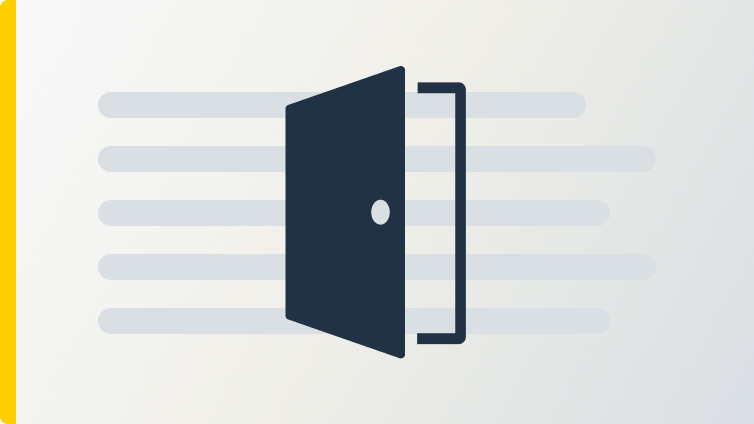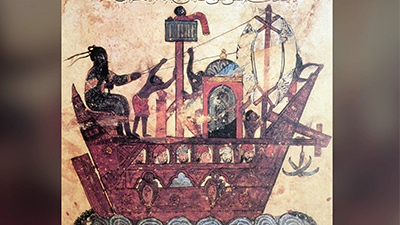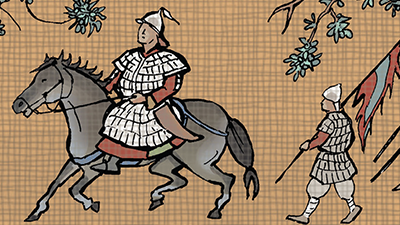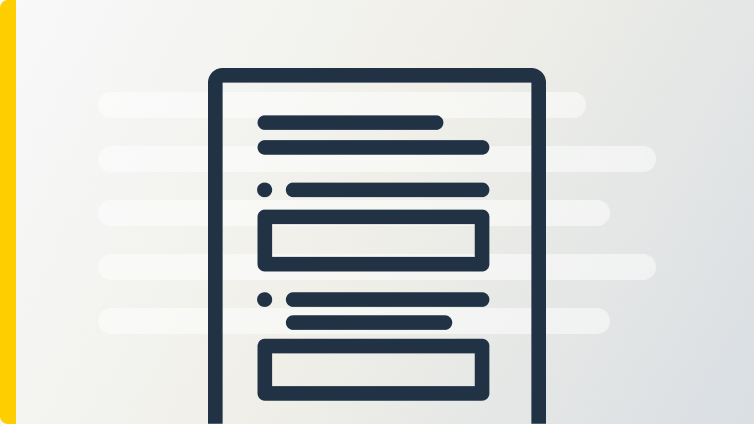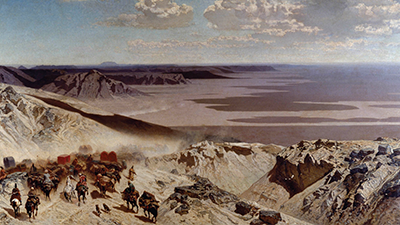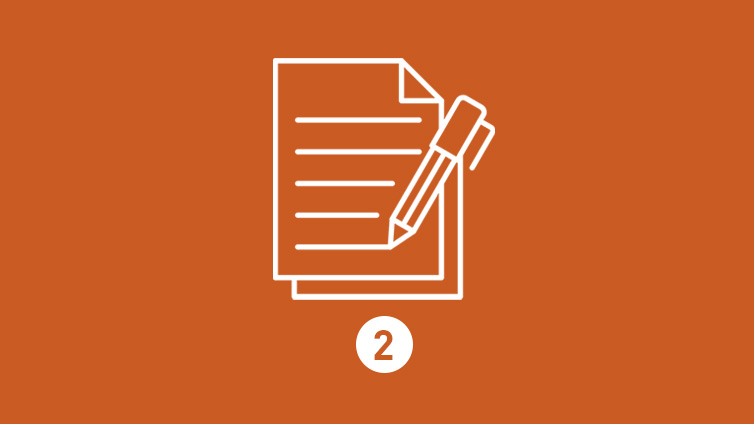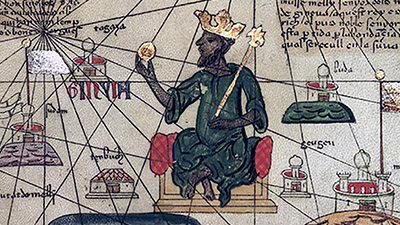Expanding the Silk Routes
Teacher Resources
Unit Problem: How did the expansion of trade routes impact communities on the edges of Afro-Eurasia?
As the Silk Roads expanded, new regions were connected across this vast network of exchange. From medieval England to West Africa, travelers, soldiers, sailors, merchants, and many others moved goods and ideas to new places, transforming life across Afro-Eurasia.
Learning Objectives:
- Learn about regional networks of exchange and how these networks impacted communities in Afro-Eurasia.
- Examine the intellectual, cultural, and environmental effects of networks of exchange such as the Indian Ocean and trans-Saharan systems.
- Use a graphic biography to support, extend, or challenge the overarching narratives from this time period.
Vocab Terms:
- caravanserai
- commercialization
- guild
- hajj
- livery
- textile
- till
Opener: Expanding the Silk Routes
To teach this lesson step, refer to page 2 of the Lesson 5.7 Teaching Guide.
Merchants were the lifeblood of the Silk Roads. They traveled long distances over difficult routes. What do you think they most needed?
Indian Ocean Trade
To teach this lesson step, refer to page 3 of the Lesson 5.7 Teaching Guide.
Want to know more about our historical comics? Check out the Graphic Biographies Guide.
The Indian Ocean was one of the most important trade networks in the world during this period. Use this article and graphic biography to explore this diverse region.
-
Guiding Questions
-
Before you read
Preview the questions below, and then skim the article. Be sure to look at the section headings and any images.
While you read
Look for answers to these questions:
- What enabled the vast trading system of the Indian Ocean? How?
- Where were the busiest ports in the Indian Ocean? Why?
- How did the rise of empires help expand the trade?
- How did culture drive trade?
- What important aspect of the Indian Ocean trade is highlighted by the Zheng He voyages?
After you read
Respond to this question: What evidence can you find in this article to support or challenge the claim that the Indian Ocean was the most important trading system in the world during this period?
-
Guiding Questions
-
Before you read
Preview the questions below, and then skim the comic, paying attention to things like prominent colors, shapes, and types of text and fonts. How do you know where to start and in which direction to read? What’s in the gutters (the space between panels)? Who or what is the focus of the comic?
While you read
Look for answers to these questions:
- How did Zheng He come to have three names?
- What did Zheng He do as the admiral of the Ming Dynasty?
- How does Xu Zu-Yuan describe these journeys, and how does this contrast to later Portuguese expeditions in this region?
- How does Geoff Wade describe these journeys? What is his evidence?
- How does the artist use art and design to contrast and illustrate the two big theories about Zheng He’s voyages?
After you read
Respond to this question: How does this biography of Zheng He support, extend, or challenge what you have learned about connections across Afro-Eurasia in this period?
Wool and Silk
To teach this lesson step, refer to page 4 of the Lesson 5.7 Teaching Guide.
Want to scaffold video viewing more for your students? Take a look at the OER Project Video Guide for ideas.
Want to know where all the comparison activities are in this course? Look no further than the World History Origins Practice Progressions Placemat.
Silk and wool flowed across the networks of the Silk Roads. Use what you’ve learned in this lesson to compare the trade in these two fabrics.
-
Guiding Questions
-
Before you watch
Preview the questions below, and then review the transcript.
While you watch
Look for answers to these questions:
- Where was silk produced and exported during the Song Dynasty?
- How did the economy work during the Song Dynasty?
- In addition to clothing, what uses were there for silk?
- What does the “Pictures of Tilling and Weaving” tell us about who did most of the work to produce silk?
- What evidence is there for an industrial revolution in China in this period?
After you watch
Respond to this question: How would you tell the story of silk differently in each of the three course frames—community, networks, and production and distribution?
Key Ideas
-
Guiding Questions
-
Before you watch
Preview the questions below, and then review the transcript.
While you watch
Look for answers to these questions:
- How do Nick and Trevor describe the Afro-Eurasian trade system in the thirteenth and fourteenth centuries?
- Why did people in Flanders and northern Italy buy English wool?
- Who produced wool in England?
- How did the wool trade empower the merchant classes? What role did guilds play in this process?
- Why was wool important for England?
After you watch
Respond to this question: How would you tell the story of the Worshipful Company of Woolmen differently in each of the three course frames?
Around 1250 to 1350 CE, an archipelago of trade stretched across Afro-Eurasia. Historians Nick Dennis and Trevor Getz explore the role of the wool trade in this system and its impact on England.
Key Ideas
Salt and Gold
To teach this lesson step, refer to page 6 of the Lesson 5.7 Teaching Guide.
Looking for more support for this contextualization activity? Teachers discuss Mansa Musa Contextualization Help in the Community Forum.
Did you know that the wealthiest person in history lived in fourteenth-century West Africa? Explore the trading networks that linked wealthy empires in the article and video, and then put it all into context in the activity.
-
Guiding Questions
-
Before you read
Preview the questions below, and then skim the article. Be sure to look at the section headings and any images.
While you read
Look for answers to these questions:
- What was the “ship of the desert,” and what made it so important to the trans-Saharan trade?
- Why were pastoralists important to the trans-Saharan trade?
- Why did these trade routes reach their peak from the twelfth to fifteenth centuries?
- Why did the rulers of West African kingdoms regulate the movement of merchants through their territory?
- Why did local religions remain important long after the arrival of Islam in West Africa?
After you read
Respond to this question: How do you think that trans-Saharan routes were connected to other networks in Afro-Eurasia?
-
Guiding Questions
-
Before you watch
Preview the questions below, and then review the transcript.
While you watch
Look for answers to these questions:
- Why are oral traditions important for understanding history?
- Who was Mansa Musa, and why was his hajj (pilgrimage to Mecca) so significant?
- What was Mali like when Mansa Musa ruled it, in terms of both politics and religion?
- What kinds of states were built along the eastern coast of Africa at this time, and how were they linked?
- What kinds of goods were traded through the Swahili city-states?
After you watch
Respond to this question: Why do you think two different kinds of states formed in different African regions (large empires in the interior of West Africa and city-states along the coast of East Africa)?
Key Ideas
Closer: Expanding the Silk Routes
To teach this lesson step, refer to page 12 of the Lesson 5.7 Teaching Guide.
Our Writing Guide emphasizes the importance of informal writing in the course.
In this lesson, you explored how the expansion and contraction of trade routes over time influenced networks. How has your thinking changed?
West Africa
To teach this lesson step, refer to page 12 of the Lesson 5.7 Teaching Guide.
West Africa was home to several powerful states during this period. The Mali Empire thrived in part thanks to its control of the production and trade of gold. Trade networks brought new ideas such as Islam to Mali, transforming society.
-
Guiding Questions
-
Before you read
Preview the questions below, and then skim the article. Be sure to look at the section headings and any images.
While you read
Look for answers to these questions:
- Who was Mansa Musa?
- What does the map tell us about settlements of communities in the Sahel?
- What is the Sahelian state model?
- What is religious pluralism?
- What are some of the arguments for and against considering Mali an empire?
After you read
Respond to these questions: Can you think of other societies you’ve learned about in which the state supported religious pluralism? Which societies, and when?

